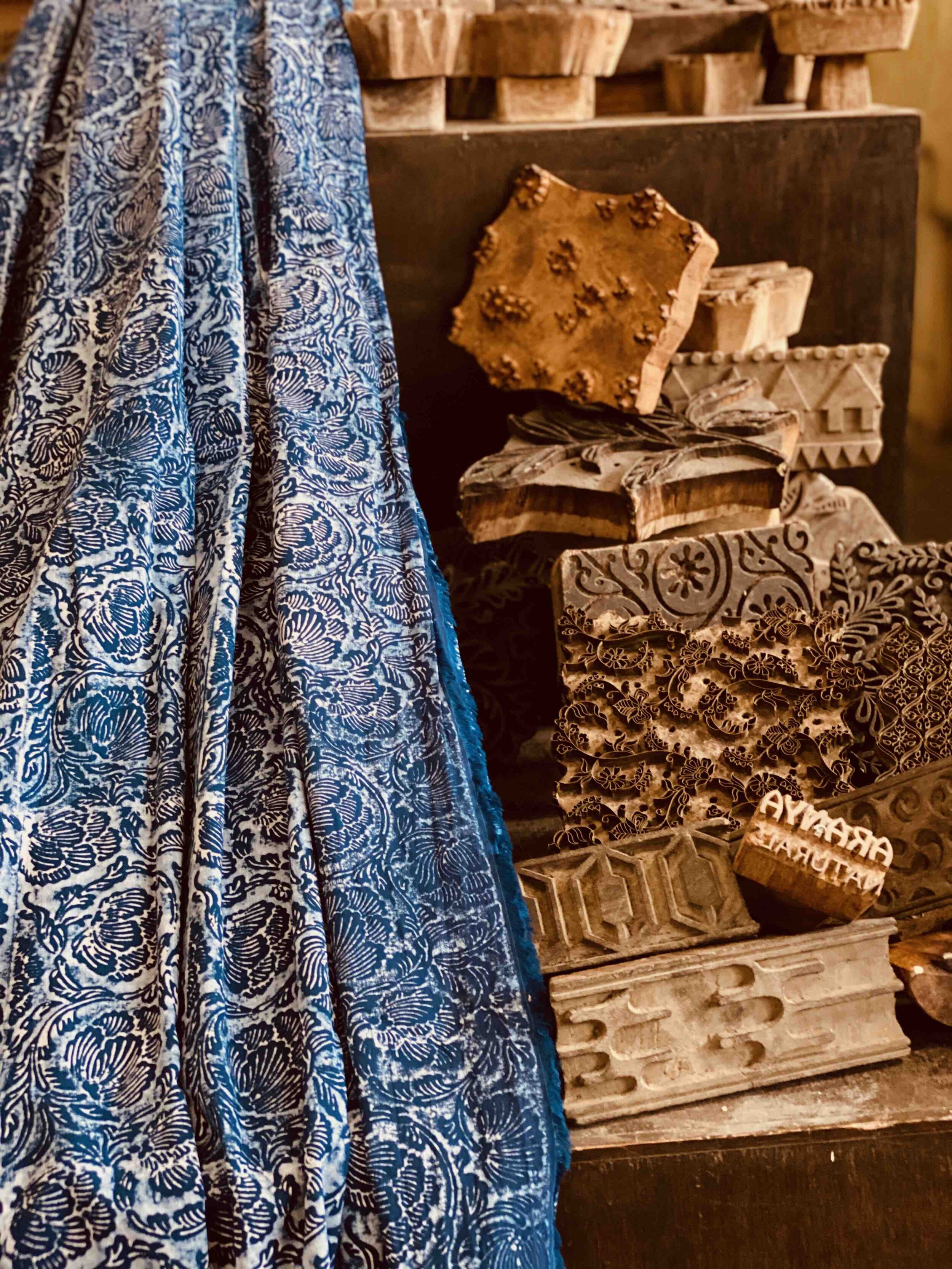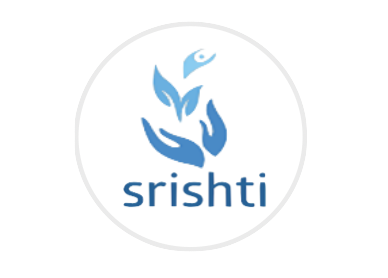
“Indigo |Pomegranate shells |Kadukka or Catechu |Manjistha |Tea Waste |Eucalyptus leaves | Eupatorium or Nilagiri Kozha |Mulberry leaves |Lemon grass |Turmeric | Marigold flowers”
—— A DyeHouse ——

estd.1994
Our Natural DyeHouse Dyes Textiles produced by weavers across India in Natural dyes collected from plants & sourced from native sources. Our artist enrich the fabric with block prints, tie & dye, eco-printing & Shibori Techniques.
a trip - a new skill - an idea rooted from passion …
The story of Aranya Natural is rather special to the Mrs. Ratna Krishnakumar, the Managing Trustee of Srishti Trust.
In late 1993 she went to Dhaka, Bangladesh on a pleasure trip with a friend to learn Natural Dyeing.
A couple of months later, she felt that she wanted to do something more with the training she had obtained from the trip as a spark had ignited within her. A few months on, in Munnar, she came across a vacant cattle shed on one of her walks along the tea plantations”
—— ARANYA NATURAL ——
Sustainability | ReCycling | Up-Cycling | Ethical Practices & Eco-friendly methods
The forests of Munnar are their paint box, providing the palette of colours used to paint from in the dye making process. The specially-abled artists at the DyeHouse have been trained by the world renowned Shibori Scholar, Curator & Artist - Yoshiko Wada in the resist-dye technique of Shibori. Axel Becker - Our Mentor for Everything Indigo - a special bond with our artists and has over the years conducted “Specially curated Indigo Workshops only for Aranya Natural and has installed a Vat at the DyeHouse. Our textiles are dyed in Natural dyes and effluent is treated and recycled for use in the gardens at Srishti.
Our textiles are embellished with traditional & contemporary patterns using the Shibori techniques as well as an array of traditional Indian textile craft techniques. We Recycle, Up-cycle and adopt ethical & sustainable methods while we create our textiles.
Creative designs curated by in-house designers breathe life into fabrics using fresh-leaf eco-printing &
the traditional Indian art of block designs have had long standing patronage.”
“Sarees | Pashmina Shawls|Silks |Cushion Covers |Cottons | Stoles | Linen | Scarves|Table Linen | Organza |Yardage|Tabby Silks|Wall-hangings | Chiffon | Chanderi Silk”
—— our Textiles ——
Our craft Techniques …
“Yoshiko Wada — our Mentor for everything Shibori, has been visiting Aranya ever year since 1997 and has not only been our guide & teacher. She has taught us some special techniques which are signature to Aranya’s Shibori creations.Shibori is a cloth dyeing technique which includes stitching, binding, twisting, clamping and folding. Shibori can be used not only to create patterns on cloth but to turn fabric from a two-dimensional into a three-dimensional object.
This is a very labor intensive method. The special feature of Shibori is a soft or blurry edged patterns.
Konoko Shibori |Miura Shibori | Batik | Nui Shibori |Kumo Shibori |Tie & Dye | Arashi Shibori |Katano Shibori| Itajime Shibori |Botanical Printing |Tesuji Shibori | Block Printing | Makiage Shibori”
—— our CraftStudio ——
Batik
Patterns are printed using blocks dipped in hot wax, usually made from a mixture of paraffin or beeswax, sometimes mixed with plant resins, which functions as a dye-resist. In freehand batik, the artisan draws the pattern with chalk and later redrawn using hot wax.This is then dyed.
Arashi
Also known as pole-wrapping Shibori. The resulting pattern is lines which look like rain.
Itajime
Kumo
A pleated and bound Shibori technique where the cloth is bound very closely to give a spider like design.
Tie & Dye
Mokume
Nui
A simple running stitch is used, and then the cloth is pulled together to become tight. It is then knotted and dyed. This Shibori technique allows for greater control of the pattern and greater variety of pattern, but it is much more time consuming.
Makiage
Block
The process of printing patterns on textiles, usually of linen, cotton or silk, by means of incised wooden blocks.The whole process is lengthy, as it takes 6 to 7 days for the fabric to finish.
We use different printing pastes - Kasmi (Black), Alum(Red and yellow), Catechu(Brown).
Konoko
This is similar to tie-dye. Some part of the cloth is tied with thread or rubber bands to get the desired pattern.
Tesuji
Cloth is hand-pleated over a rope core for the length of the fabric. Then, the pleated cloth is stretched between stands that hold the rope taut.
The artist moves along the cloth with a string to bind it tightly at quarter-inch intervals.
Botanical
Eco-Printing is the technique in which the flowers, leaves, berries and stems transfers their imprints on to the fabric by the process of steaming.
This process is a one-of-a-kind art where no two pieces can be similar.
Katano
A Shibori resist process that combines pleating, covering, and stitching.The cloth is folded into vertical pleats, which are held between protective strips made of folded cloth. Stitching is then done through all the layers.
Muira
This process uses a hooked needle and plucking sections of the cloth. The thread is not knotted, and is just looped. The resulting dyed cloth is a water-like design.
“As the years went by, we attended many exhibitions across India and the world. One of the more significant ones was a quilting exhibition in London, where we now conducted a workshop, we had a stall with our new and perfected Shibori techniques, we interacted with curators, artists, buyers & designers and made deep forays into the world of Natural Dyeing. We had become a name to reckon with and had organically grown our reputation through personal interaction and relationships built on mutual trust and understanding…”
— Muthupechi —
Over the 2 decades, we have travelled the world with our specially-abled artists. Muthupechi has been to France to conduct a workshop at a Textile Group conference, Poongani attended a workshop in Minneapolis, JayLakshmi & Muthukumari to Japan, We attended conferences in Taiwan, Malaysia and exhibitions in India. ”




















